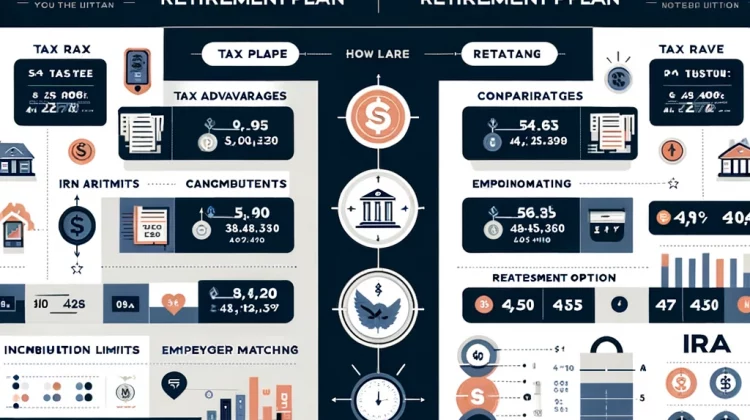
When it comes to planning for retirement, you’ve likely encountered two popular options: the Individual Retirement Account (IRA) and the 401(k) plan. Both offer valuable benefits for saving towards your golden years, but understanding their differences is crucial to making the best decision for your financial future. Let’s break down the key aspects of IRAs and 401(k)s, including their benefits, limitations, and how they fit into your overall retirement strategy.
Understanding 401(k) Plans
A 401(k) is a retirement savings plan offered by many employers. It allows you to save and invest a portion of your paycheck before taxes are taken out. One of the major advantages of a 401(k) is the potential for employer matching contributions, essentially free money towards your retirement. However, 401(k) plans are subject to annual contribution limits and often have a limited selection of investment options managed by the plan provider.
The Basics of IRAs
An IRA, on the other hand, is a retirement account that you open on your own through a financial institution. IRAs offer a wider range of investment options than 401(k)s, from stocks and bonds to ETFs and mutual funds. There are two main types of IRAs: Traditional and Roth, each with its own tax advantages. Contribution limits for IRAs are typically lower than for 401(k)s, but they offer more flexibility in terms of investment choices.
Tax Implications and Considerations
The tax treatment of 401(k)s and IRAs is a key factor in choosing between them. Contributions to a traditional 401(k) and a Traditional IRA are made with pre-tax dollars, which can reduce your taxable income. However, withdrawals in retirement are taxed at your current income tax rate. Roth IRAs, by contrast, are funded with after-tax dollars, meaning withdrawals in retirement are tax-free, provided certain conditions are met.
Which Is Right for You?
Deciding between a 401(k) and an IRA depends on several factors, including your current income, expected retirement needs, and whether your employer offers a 401(k) match. If you have access to a 401(k) with employer matching, contributing enough to get the full match is often a no-brainer. Beyond that, an IRA can offer more investment flexibility and potential tax-free growth with a Roth IRA.
Combining Both for Maximum Benefit
For many individuals, a combination of a 401(k) and an IRA provides the best of both worlds. Contributing to a 401(k) to receive the full employer match, and then investing in an IRA for additional savings and investment choices, can optimize your retirement savings strategy.
Frequently Asked Questions About IRA vs 401(k)
Can I contribute to both a 401(k) and an IRA?
Yes, you can contribute to both a 401(k) and an IRA in the same year, but there are income limits that may affect the deductibility of your IRA contributions if you’re also covered by a 401(k) at work.
Should I choose a Roth or Traditional IRA?
The choice between a Roth and Traditional IRA depends on your current tax bracket, expected future income, and retirement goals. A Roth IRA may be more beneficial if you expect to be in a higher tax bracket in retirement.
Conclusion: Tailoring Your Retirement Plan
Understanding the differences between an IRA and a 401(k) is just the beginning. Tailoring your retirement savings strategy to fit your personal financial situation, goals, and preferences is key to building a secure and comfortable retirement. Whether you opt for the employer-sponsored 401(k), the flexible IRA, or a combination of both, the most important step is to start saving early and consistently. With careful planning and informed decisions, you can navigate the complexities of retirement savings and look forward to a financially secure future.
